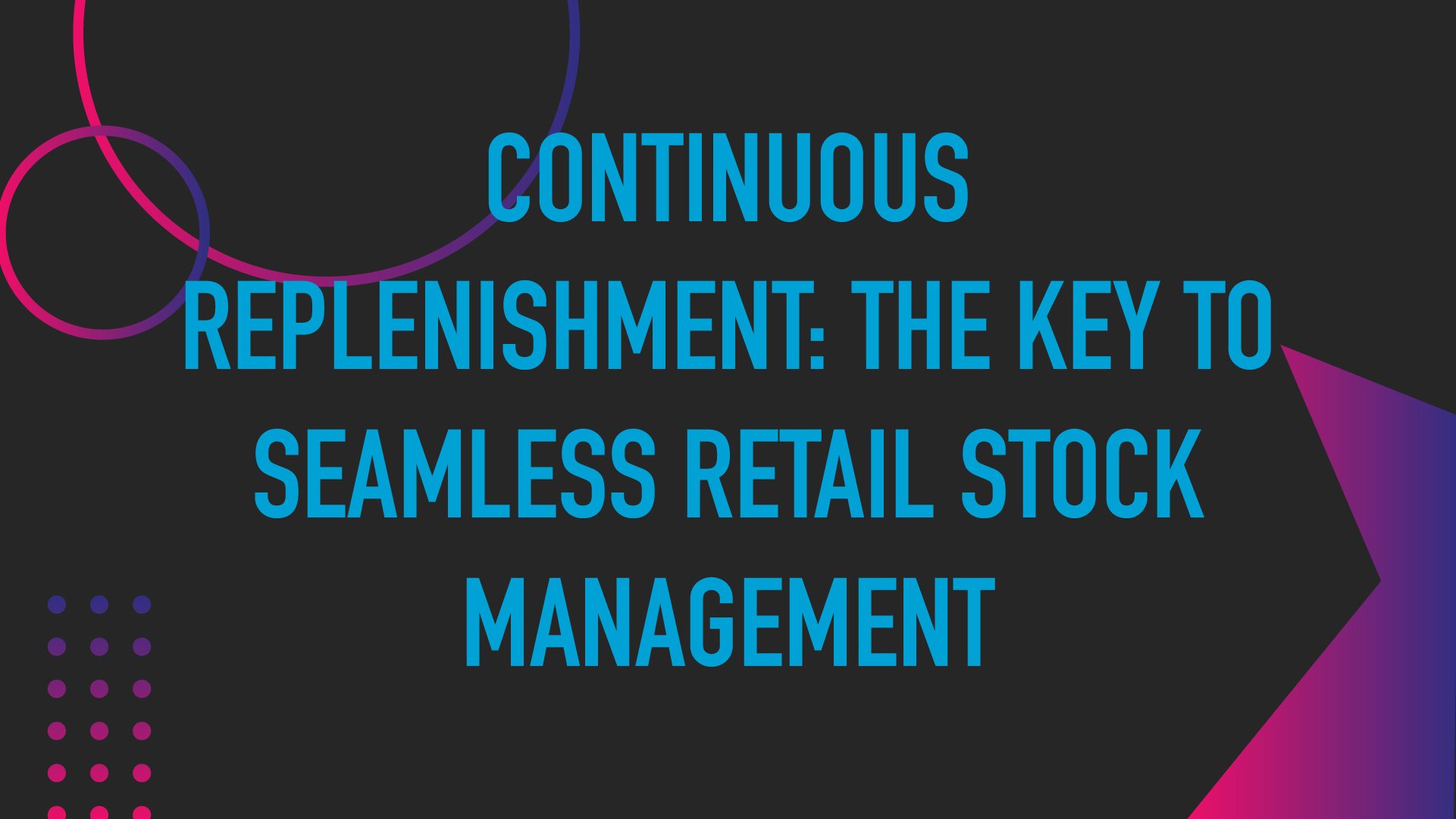The Evolution of Retail Distribution: Adapting to Trends Shaping the Future


The world of retail distribution is experiencing a major transformation due to advancements in technology and changing consumer behaviors. Industry leaders must analyze how these changing behaviors and preferences shape retail distribution strategies to direct innovation efforts and keep up with emerging trends.
Keeping Pace with Emerging Distribution Trends
Staying ahead of the curve is a strategic advantage and a necessity. Today's retail market is a dynamic ecosystem where trends are guided by evolving consumer preferences and advancing technology. In the face of these rapid changes, continuous improvement is the cornerstone of successful retail distribution. Merchandisers, distributors, and retailers are tasked with adopting a proactive approach, fostering a culture of perpetual enhancement to tackle challenges head-on.
Emerging Distribution Trends of 2024
Demand-Driven Distribution Networks:
As consumer expectations for quick and accurate order fulfillment continue to rise, industry players are increasingly adopting demand-driven distribution models. These models utilize data analytics and real-time insights to anticipate consumer demand accurately. Retail teams can align their distribution networks with anticipated demand by analyzing consumer buying patterns, preferences, and historical data. Aligning distribution networks with actual demand optimizes inventory levels and reduces excess stock, ensuring that products are available when and where consumers want them.
Just-in-Time Inventory Management:
Just-in-time (JIT) inventory management is gaining popularity to minimize holding costs and reduce waste. Consumers today seek a wide variety of products and expect diverse options. JIT inventory management responds to this demand for variety by optimizing stock levels, preventing excess inventory of slow-moving items, and ensuring that popular products are readily available. Team leaders can leverage technology to synchronize supply chain processes and ensure products arrive when needed to prevent overstock or stockouts.
Omnichannel Distribution Strategies:
 Consumers now have the flexibility to research products online, make purchases in-store, or use services like click-and-collect. This emerging client behavior has led to the growing trend of integrating omnichannel distribution strategies. Industry leaders are leveraging online and offline channels to create a seamless consumer shopping experience by aligning distribution methods to accommodate this fluidity and ensure a cohesive experience across all channels. Strategies such as buying online, picking up in-store (BOPIS), and utilizing a unified inventory system across channels are being implemented to achieve this.
Consumers now have the flexibility to research products online, make purchases in-store, or use services like click-and-collect. This emerging client behavior has led to the growing trend of integrating omnichannel distribution strategies. Industry leaders are leveraging online and offline channels to create a seamless consumer shopping experience by aligning distribution methods to accommodate this fluidity and ensure a cohesive experience across all channels. Strategies such as buying online, picking up in-store (BOPIS), and utilizing a unified inventory system across channels are being implemented to achieve this.
Automation and Robotics in Distribution Centers:
The adoption of automation and robotics in distribution centers has steadily increased as technological advancements in these areas continue to progress. The rising consumer expectations for fast and efficient delivery services primarily drive this trend. By implementing automated warehouses and robotic systems, businesses can streamline operations and achieve quicker order fulfillment. This meets consumers' desires for rapid product delivery and effectively reduces the time between purchase and receipt, resulting in a more satisfying shopping experience for customers.
AI-Powered Predictive Analytics:
Artificial intelligence (AI) and predictive analytics are crucial in today's distribution trends. AI-powered predictive analytics provide consumers with a personalized experience by anticipating individual preferences. Businesses use AI algorithms to analyze large datasets and predict future consumer behaviors, enabling more accurate demand forecasting and helping tailor their distribution strategies to align with what consumers are likely to purchase. By analyzing consumer behavior, retail leaders can predict trends and make strategic decisions for inventory and distribution.
Technology Integration in Retail Distribution
Technology enables swift adaptation of strategies to address challenges and seize opportunities, ensuring that retail operations remain agile and responsive. Retail teams can proactively navigate the impact of consumer behavior on emerging distribution trends by using today's technology to facilitate the integration of data-driven insights, automation, and collaborative tools, empowering retail professionals to stay agile in the evolving demands of the market.
Data Analytics for Consumer Insights:
The relationship between consumer behavior and technology significantly influences future distribution trends. Technological advancements are helping store and field teams meet consumer demands and transforming the entire distribution process. Retail teams can collect and analyze valuable consumer data using advanced analytics tools. This information allows them to understand purchasing patterns, preferences, and behaviors, empowering teams to make informed decisions about inventory levels, product assortments, and distribution strategies.
Predictive Analytics for Demand Forecasting:
Retail execution software (RES) has revolutionized distribution strategies for teams. By leveraging real-time data analytics, AI-driven insights, and automation tools, decision-making processes such as demand forecasting have improved dramatically in recent years. Incorporating this software solution leads to more efficient distribution, fewer errors, and overall improved performance. RES solutions with predictive analytics models allow for accurate consumer demand prediction by analyzing historical data and identifying trends. As a result, retail teams can anticipate future demand and ensure their distribution networks are aligned with consumer expectations.
Omnichannel Integration:
Given that consumers heavily rely on online research for making purchasing decisions, it is increasingly essential for businesses to invest in integrated retail management systems that facilitate omnichannel operations. By investing in an integrated retail management system that supports omnichannel operations, companies can effectively bridge the gap between their online and offline presence. This omnichannel approach enables them to create a seamless customer shopping journey while harnessing valuable insights from data collected across channels. With a more comprehensive understanding of customer preferences and behaviors gained through these systems, businesses can tailor their strategies and offerings accordingly.
Automation and Robotics in Warehousing:
 Businesses are strategically integrating automation and robotics into their distribution centers to enhance operational efficiency and productivity within their supply chains and meet consumers' demand for faster product delivery. These systems are designed to accurately identify, pick, and package items with minimal human intervention. Integrating automation within distribution centers eliminates manual picking errors and reduces processing time, significantly boosting efficiency while meeting consumers' increasing demand for faster product delivery.
Businesses are strategically integrating automation and robotics into their distribution centers to enhance operational efficiency and productivity within their supply chains and meet consumers' demand for faster product delivery. These systems are designed to accurately identify, pick, and package items with minimal human intervention. Integrating automation within distribution centers eliminates manual picking errors and reduces processing time, significantly boosting efficiency while meeting consumers' increasing demand for faster product delivery.
Personalization Technologies:
Personalization is a critical factor in ensuring customer satisfaction and driving purchasing decisions. With technological advancements, retail teams can now analyze large amounts of data, giving them insights into individual preferences and anticipating consumer needs. To aid personalized consumer experiences, teams should consider implementing AI-driven recommendation engines to anticipate customized marketing campaigns and push targeted promotions based on individual consumer preferences. This approach will help prepare for a more tailored and engaging shopping experience that consumers are seeking.
Communication and Collaboration Tools:
Leveraging communication and collaboration tools to foster seamless teamwork across the retail industry is crucial. Retail execution software enables seamless collaboration between store and field teams, eliminating silos and promoting a unified approach. By utilizing real-time data, analytics, and communication tools, teams can quickly adapt to market shifts. Whether working in-store or in the field, technology solutions such as collaboration platforms and mobile apps facilitate real-time communication, ensuring everyone is aligned with emerging consumer trends.
Continuous Monitoring and Adaptation:
Continuous improvement is at the heart of successful retail operation. Merchandisers, distributors, and retailers alike must embrace a mindset of perpetual enhancement to adapt to the ever-changing market. Implementing real-time monitoring systems to track consumer behavior and market trends continuously allows retail teams to adapt to changes and adjust distribution strategies in response to consumer preferences, external events, or market dynamics shifts.
Embracing the Future of Retail Distribution Through Adaptation and Innovation
To navigate the ever-changing market and stay at the forefront of retail distribution, embracing the dual forces of consumer behavior and technology is non-negotiable. Continuous improvement serves as the compass, guiding merchandisers, distributors, and retailers toward success in an industry that thrives on innovation, adaptability, and a commitment to enhancing the shopping experience. In this dynamic landscape, those who stay attuned to the trends, embrace continuous improvement, and leverage technology will undoubtedly shape the future of retail distribution.
featured content
featured content

The Importance of On-Shelf Availability in Retail: Why Keeping Items Stocked is Critical for Competitiveness in 2026
Learn why on-shelf availability is critical in today's retail store environment








